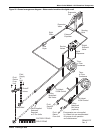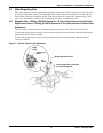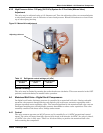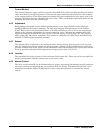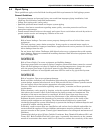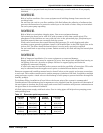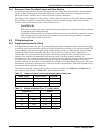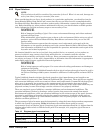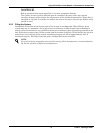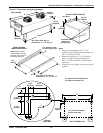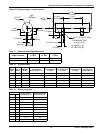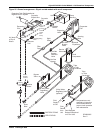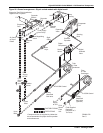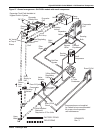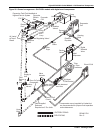
Glycol/GLYCOOL-Cooled Models—Self-Contained Compressor
Liebert
®
Challenger 3000
™
46
5.5.2 Glycol Solutions
When considering the use of any glycol products in a particular application, you should review the
latest Material Safety Data Sheets and ensure that the use you intend can be accomplished safely.
For Material Safety Data Sheets and other product safety information, contact the supplier nearest
you. Before handling any other products mentioned in the text, you should obtain available product
safety information and take necessary steps to ensure safety of use.
NOTICE
Risk of improper handling of glycol. Can cause environmental damage and violate national,
regional and local laws.
When mishandled, glycol products pose a threat to the environment. Before using any glycol
products, review the latest Material Safety Data Sheets and ensure that you can use the
product safely.
Glycol manufacturers request that the customer read, understand and comply with the
information on the product packaging and in the current Material Safety Data Sheets. Make
this information available to anyone responsible for operation, maintenance and repair of the
drycooler and related equipment.
No chemical should be used as or in a food, drug, medical device, or cosmetic, or in a product or
process in which it may contact a food, drug, medical device, or cosmetic until the user has
determined the suitability and legality of the use. Since government regulations and use conditions
are subject to change, it is the user's responsibility to determine that this information is appropriate
and suitable under current, applicable laws and regulations.
NOTICE
Risk of using improper cooling agent. Can cause reduced cooling performance and damage to
equipment and piping.
Proper formulations of inhibited formula ethylene glycol and propylene glycol must be used in
the Liebert Challenger 3000 system. Automotive antifreeze is unacceptable and must NOT be
used.
Typical inhibited formula ethylene glycol and propylene glycol manufacturers and suppliers are
Union Carbide (Ucartherm) or Dow Chemical (Dowtherm SR-1, Dowfrost). These glycols are supplied
with corrosion inhibitors and do not contain a silicone anti-leak formula. Commercial ethylene glycol,
when pure, is generally less corrosive to the common metals of construction than water itself.
Aqueous solutions of these glycols, however, assume the corrosivity of the water from which they are
prepared and may become increasingly corrosive with use if not properly inhibited.
There are two basic types of additives: corrosion inhibitors and environmental stabilizers. The
corrosion inhibitors function by forming a surface barrier that protects the metals from attack.
Environmental stabilizers, while not corrosion inhibitors in the strictest sense of the word, decrease
corrosion by stabilizing or favorably altering the overall environment. An alkaline buffer such as
borax is a simple example of an environmental stabilizer since its prime purpose is to maintain an
alkaline condition (pH above 7).
The percentage of glycol to water must be determined by using the lowest design outdoor temperature
in which the system is operating. Table 16 indicates the solution freeze point at several
concentration levels of ethylene glycol. Propylene glycol concentrations should be 1% higher than the
ethylene glycol table values to find the freeze point. For example, 41% propylene glycol freezes at
-10°F (-23°C).
NOTE
Glycol solutions should be considered for protection of the coil. When it is not used, damage can
occur from either freezing or corrosion from water.
Table 16 Ethylene glycol concentrations
% Glycol by Volume 0 * 10 20 30 40 50
Freezing Point °F (°C) 32 (0) 25 (-3.9) 16 (-8.9) 5 (-15.0) -10 (-23.3) -32 (-35.5)
Apparent Specific Gravity
@ 50°F (10°C)
1 1.014 1.028 1.042 1.057 1.071
* A minimal amount of glycol should be considered for inhibitive coil protection.



